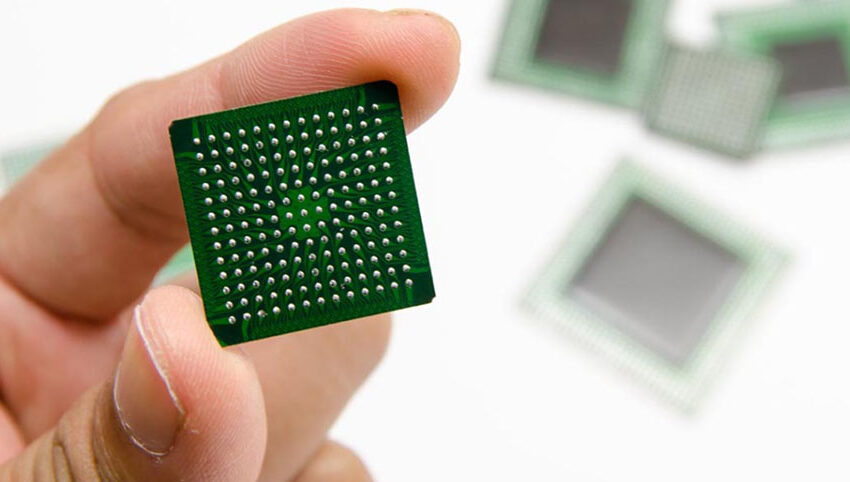FPGA Prototyping: Why It’s Essential for Modern Chip Development

Innovation in the fast-paced arena of contemporary chip creation is fuelled by unrelenting demand for quicker, more efficient, and more dependable designs. Traditional development techniques can find it difficult to keep up as chips become more complicated. FPGA prototyping provides a versatile and strong option for hardware designers in this situation. FPGAs have become a vital tool in chip creation as they permit early testing, iteration, and optimisation. This article explores why current chip production from chip company in usa depends on FPGA prototyping and how it enables designers to push the limits of what is feasible in hardware development.
1.Speeding Time-to-Market for Complicated Chips
Faster product to market is essential in the competitive environment of today. FPGA prototype accelerates the design cycle, hence enabling quick iterations of chip designs prior to silicon finalisation. Engineers may run their ideas on FPGA hardware, test them under real-world settings, and rapidly find faults or inefficiencies. Faster optimisation is made possible by this iterative approach, which shortens the period from idea to market-ready product. Changes on FPGA prototypes may be done quickly, allowing businesses to bring new technology to market more quickly and guarantee they remain ahead of the curve in a swiftly changing sector.
2.Early Testing Helps to Reduce Risk
Modern processors’ intricacy makes little mistakes cause major failures. FPGA prototyping reduces this risk by allowing designers to evaluate their concepts in actual settings early in the development process. Unlike simulated testing, which might miss certain problems, FPGA prototypes provide a tangible platform where functionality and performance can be exhaustively verified. Engineers may see how their designs perform under real operational circumstances and change them appropriately. Such early testing phases significantly lower the probability of expensive and time-consuming mistakes in the later phases of chip manufacture, such as after the design has already been submitted to fabrication.
3.Development Process Cost Efficiency
Building chips in a genuine silicon environment may be costly, particularly for early-stage prototypes that might go through many changes. By employing an FPGA as a stand-in for the final silicon, FPGA prototyping lets businesses avoid the significant expenses related to real chip manufacture. A vlsi chips company may then go on to manufacture the final chip with more confidence and less design changes after the FPGA has verified and optimised the design. Especially for businesses with tight budgets or those creating chips for specialised uses where conventional prototype might be very costly, the cost reductions from early-stage testing on FPGA platforms can be significant.
4.Customisation and Creative Flexibility
The flexibility of FPGA prototyping is among its biggest benefits. FPGA systems let designers to around with unique features and settings without having to change the real silicon. FPGA prototyping offers the freedom to investigate a broad spectrum of design possibilities whether one is altering clock rates, modifying memory settings, or trying novel power-saving modes. Innovation depends on this adaptability, particularly when designing semiconductors for 5G connectivity, artificial intelligence, machine learning, or other revolutionary uses. Working just with conventional silicon designs would make it difficult or excessively costly for engineers to iterate and explore.
5.Closing the Gap Between Hardware and Software Development
Modern chip development sees hardware and software creation often running parallel. FPGA prototype bridges the gap between the two fields by means of a smooth integration of hardware and software testing. Developers may test both the chip’s hardware and the software that will run on it by putting software onto an FPGA prototype concurrently. This concurrent testing guarantees that the hardware and software will cooperate as planned when the chip is finished. It also lets software developers start developing their applications early, long before the last chip is available, therefore reducing development cycles and speeding the time to market.
6.Scaling Designs for Bigger Systems
Chip systems’ complexity drives increased requirement for scalability. FPGA prototyping makes it simple to scale designs, hence facilitating the testing of more complicated, bigger systems. FPGA prototyping allows the integration of many components and features in a single prototype whether one is creating a system-on-chip (SoC) or a multi-core CPU. For developers creating high-performance systems with complex and linked subsystems, this scalability is very important. Testing these bigger systems on an FPGA platform helps engineers to guarantee that the final design will grow efficiently without running into unanticipated problems or constraints.
7.Team and Stakeholder Cross-Functional Cooperation
Modern chip development usually includes several teams and stakeholders, including hardware designers, software developers, and even outside partners. FPGA prototype offers a common platform where teams may cooperate more efficiently, hence facilitating a more integrated development process. Working on the same FPGA-based prototype allows several teams to coordinate their efforts and evaluate their contributions in real-time. This cooperative strategy improves the synchronisation between hardware and software development, hence lowering misunderstandings and misalignments. It also enables more seamless integration of additional components, whether they be add-on modules or third-party IPs, hence guaranteeing that the final chip design will operate harmoniously.
8.Confidently Investigating New Technologies
The need for prototype platforms that can fit these breakthroughs increases along with the need for increasingly sophisticated technology. In a controlled setting, FPGA prototyping provides a special chance to investigate developing technologies such quantum computing, neuromorphic systems, and sophisticated artificial intelligence processors. Before committing to a full-scale design, engineers may model how novel architectures and algorithms will operate on actual hardware. Early research helps businesses remain at the cutting edge of innovation and lowers the risk connected with pioneering new technology. FPGA prototype lets you safely and iteratively test the newest technologies, hence allowing quicker inclusion into the chip design phase.
Conclusion
Modern semiconductor engineering development now absolutely depends on FPGA prototyping. FPGA systems provide great help all over the development lifecycle, from speeding time-to-market and lowering costs to allowing early testing and promoting innovation. FPGA prototyping will remain a major facilitator for hardware designers as circuits become more complicated and the need for cutting technologies increases. FPGA prototype guarantees that the chips of the future will satisfy the high requirements of performance, dependability, and innovation that the contemporary world expects by providing flexibility, performance verification, and risk reduction.





